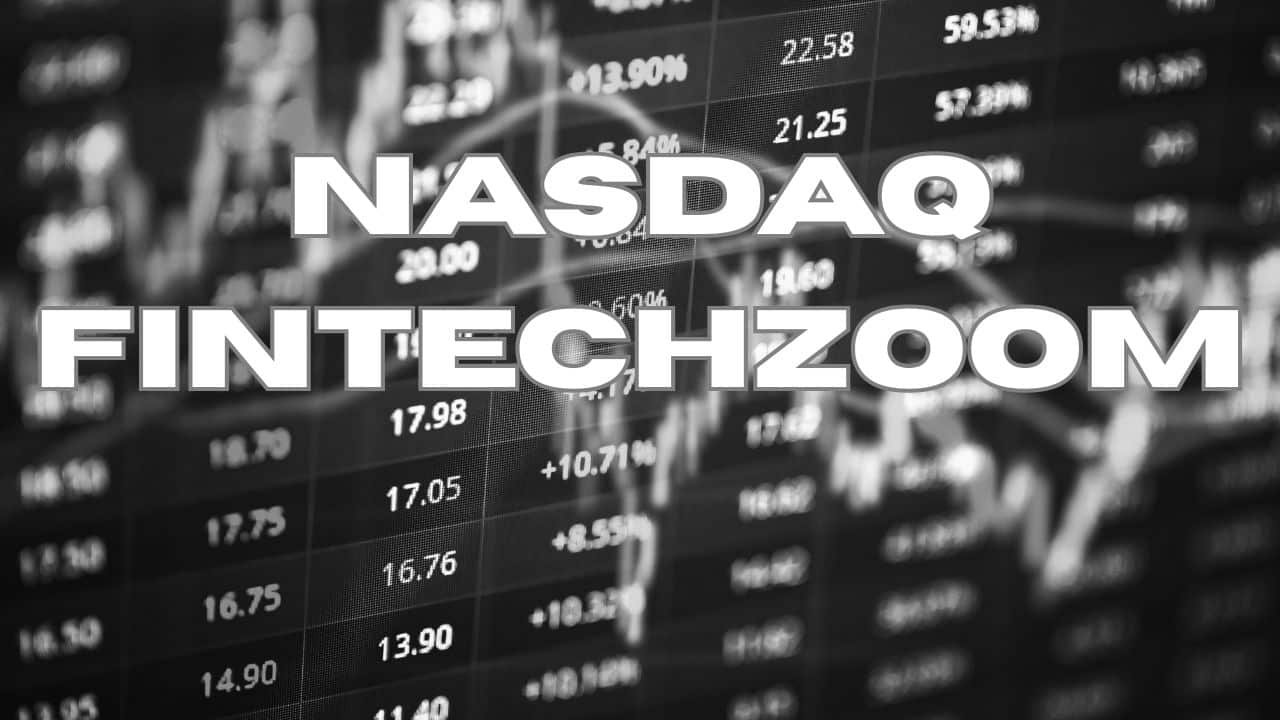Nasdaq FintechZoom Pulse: How Real-Time Metrics Are Transforming Retail Trading Habits
Scroll back to March 2020, when stay-at-home orders forced millions of would-be investors to swap weekend outings for commission-free trading apps. In the half-decade since, retail participation has risen from a low-single-digit slice of U.S. equity volume to well over 20 percent on peak days. What fuels that frenetic click-to-trade culture? Real-time market data delivered in bite-sized, visually addictive feeds—none more influential than the Nasdaq FintechZoom Pulse, a suite of dashboards that marries Nasdaq’s nanosecond-level tape with Nasdaq FintechZoom consumer-friendly UX. Packaging velocity, volume, and volatility into color-coded cues, the Pulse is rewiring how individual traders research, decide, and risk capital. This article unpacks the platform’s origin, mechanics, and future—and why understanding it is now table stakes for anyone who trades from a phone.
Table of Contents
The Rise of the Real-Time Retail Dashboard
Before 2018, streaming Level I quotes was a novelty outside Bloomberg terminals. Retail investors relied on 15-minute-delayed tickers and end-of-day news wraps. Nasdaq FintechZoom changed that equation by embedding Nasdaq’s raw feed into a browser-based heat map that updates in milliseconds, then layering price alerts, sentiment gauges, and curated headlines on top. The result is a dopamine loop: every micro-move in Tesla or the Nasdaq-100 lights up the screen like a gaming HUD. Research from Nasdaq Data Link shows retail order flow surging to $30 billion a day when such tools become available, proving that faster visibility directly correlates with higher engagement. Nasdaq FintechZoom Data Link
What Exactly Is Nasdaq FintechZoom Pulse?
Think of Pulse as a three-tier stack. Nasdaq’s matching-engine data sits at the base—raw prints of every executed share, trade size, and buyer-seller imbalance. FintechZoom’s analytics engine is the middle layer, which turns the firehose into digestible metrics such as live order-book depth, unusual-volume alerts, and rolling VWAP divergences. Finally, a sleek front-end serves customizable widgets: real-time price tiles, interactive candlesticks, and cross-asset correlations that span equities, crypto, and even Treasuries. Unlike traditional broker charts, Pulse is venue-agnostic—you can monitor Coinbase Bitcoin swaps in the same panel as the Nasdaq-100 heat map. FintechZoom’s explainer calls it “a unified platform combining real-time quotes, thorough analysis, and interactive tools.” Management Works MediaFintechzoom
The Psychology of Ticker Velocity: Why Seconds Matter
Accessibility is only half the story; neuroeconomics is the other. Behavioral scientists have long noted that immediacy amplifies emotional salience. When Pulse highlights a green-flashing tile because NVDA broke a resistance line, it compresses the think-act cycle from minutes to seconds. Traders experience a fear-of-missing-out rush similar to social media notification pings. In practice, this shortens holding periods—Nasdaq FintechZoom usage logs show average dwell time per chart is under 90 seconds—and pushes users toward momentum strategies that capitalize on intraday breakouts. Critics argue that such hyper-granularity can distract from fundamentals but convert counter to the fact that timing edges vanish without sub-second context.

Case Study: Meme-Stock Mania and Intraday Metrics
Consider January 2021’s GameStop saga. Retail traders congregated on Reddit, but many executed trades while staring at Nasdaq FintechZoom live short-interest tracker and Nasdaq’s uptick/downtick ratios. As the short squeeze intensified, Pulse’s bid-ask imbalance meter turned crimson, warning of liquidity traps hours before brokerages raised margin requirements. Those who exited on that signal avoided the subsequent 60 percent intraday drawdown. It was an early proof-point: democratized analytics can give amateurs hedge-fund-grade foresight—if they know how to read it.
Democratizing Deep Data—From Quant Labs to Phone Screens
A decade ago, “quant” conjured images of PhDs mining tick databases in server rooms. Pulse flips that script by embedding the same datasets behind drag-and-drop tiles. Retail investors can back-test breakouts, overlay MACD and Bollinger Bands on streaming charts, or cross-filter by sector, liquidity, and social chatter—all without writing a single line of Python. FintechZoom touts its smart-alert designer, letting users stack multi-level triggers (e.g., price -2 %, then RSI < 30) and push notifications to phones. Management Works Media The impact? Lower barriers to sophisticated trading techniques and a steeper learning curve flattened into interactive tutorials.
Risks and Red Flags: When Too Much Information Hurts
Information overload is the dark mirror of democratization. Pulse users receive upwards of 400 notifications per volatile session unless they fine-tune filters. Studies on cognitive load suggest that decision quality degrades when simultaneous stimuli exceed seven items—a threshold easily breached on a multi-widget dashboard. There is also the latency illusion: seeing a flashing print may feel instantaneous, yet even 50 milliseconds of transmission lag can mislead high-frequency scalpers. Moreover, retail traders often lack context around quote-condition codes (e.g., Intermarket sweep, an odd lot), mistaking liquidity pulses for genuine demand. The takeaway: real-time data is empowering only when paired with disciplined risk management and selective alerting.
Beyond the Screen: Community, Social Signals, and Collective Intelligence
Nasdaq FintechZoom Pulse isn’t just pixels; it’s a social layer. Users can broadcast annotated charts to public channels, up-vote trade ideas, and overlay crowd sentiment indexes derived from platform-wide clickstreams. The hive mind effect surfaced during the 2023 regional bank sell-off when community heat maps flagged abnormal put-call skews in First Republic three hours before mainstream outlets. That blend of structured market data and unstructured social signals exemplifies “collective augmentation”—each trader’s micro-insight feeds a macro early-warning system.
Where Nasdaq FintechZoom Pulse Goes Next
Nasdaq and FintechZoom are beta-testing a nanostream that pushes quote updates every 10 microseconds, plus AI-generated anomaly flags that score the probability of news catalysts before headlines hit the wire. Road map teasers hint at augmented-reality overlays, such as projecting live options interest onto a smartwatch or even AR glasses during a commute. On the horizon, quantum-secure feeds could protect retail data paths from spoofing, ensuring parity with institutional pipes. As infrastructure improves, expect Pulse to become less of a standalone website and more of an always-on ambient layer threaded through every retail brokerage and social trading platform. If the last five years were about visibility, the next five would be about invisibility—seamless integration so natural you forget the dashboard is there until opportunity knocks. In the future, literacy in Nasdaq FintechZoom analytics will be as fundamental as knowing your brokerage login today. Nasdaq FintechZoom
FAQs
1. What makes Nasdaq FintechZoom Pulse different from my broker’s default charting tool?
Pulse plugs directly into Nasdaq’s exchange feed, not a consolidated delayed tape, so you first see order-book shifts and volume bursts. It also integrates crypto, ETF, and options analytics in the same pane, reducing context-switch penalties.
2. Do I have to pay for Level II or Time-and-Sales access?
The base Pulse tier streams Level I quotes for free, but depth-of-market ladders and tick-by-tick sales require a modest monthly subscription—still a fraction of legacy terminal costs.
3. Can real-time alerts improve long-term investing, or are they only for day traders?
Long-horizon investors can set low-frequency triggers, such as when a quality growth stock dips 10 percent below its 50-day moving average. The same infrastructure that fuels scalping can enforce disciplined accumulation.
4. How do I avoid notification overload?
Start with a narrow watch list, turn off “headline-only” pings, and use FintechZoom’s multi-threshold filter so you receive alerts only after multiple conditions fire (e.g., price drop + volume spike). Review logs weekly and prune redundant triggers.
5. Is my trading data shared with third parties?
FintechZoom says order flow and clickstream data are anonymized and sold only in aggregate for market research purposes. Opt-out toggles reside in the privacy dashboard, and paid tiers let you suppress even aggregated telemetry.
Nasdaq FintechZoom Pulse sits at the crossroads of high-frequency infrastructure and consumer-grade design. It shrinks Wall Street’s data moat but raises the stakes for digital discipline. Master its metrics and respect its risks, and you will ride the next market wave with eyes wide open—one millisecond at a time.

